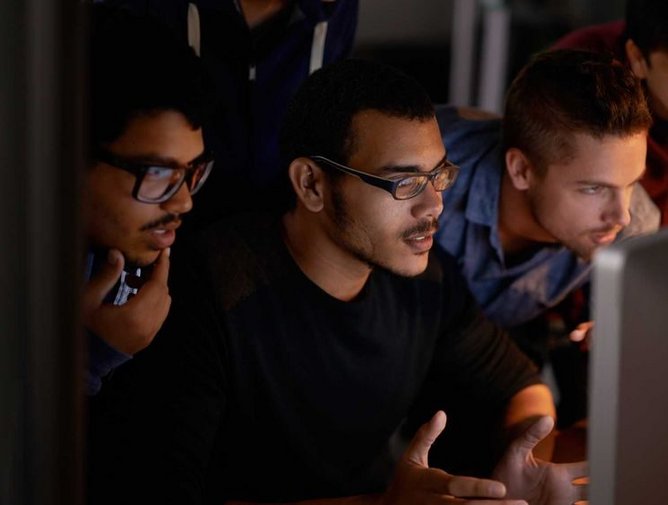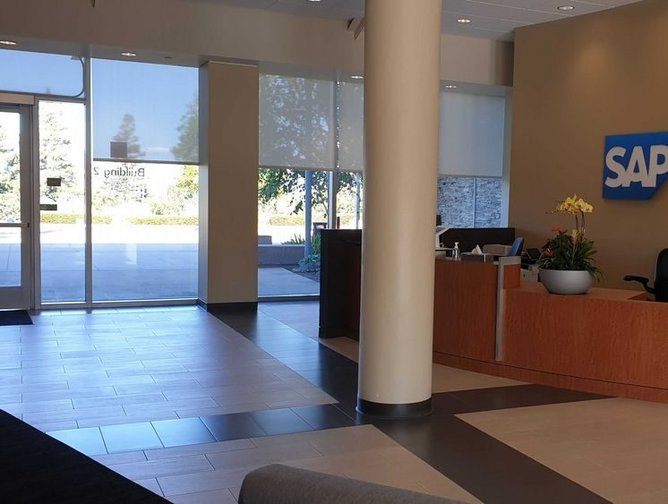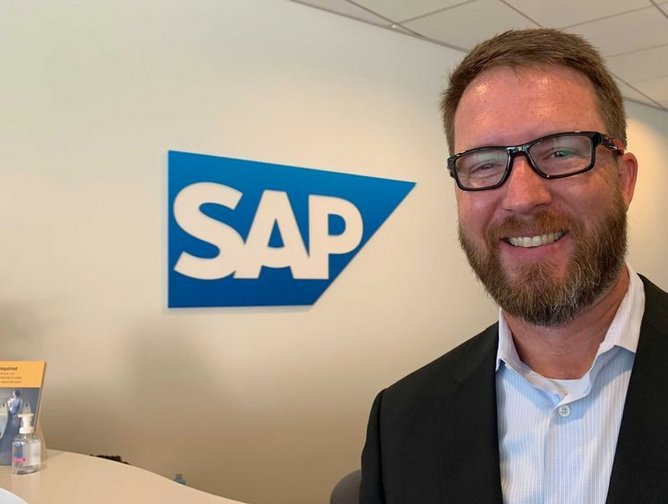Why 5G Matters: SAP’s 5G Council Explores the Opportunity
Sitting in his Palo Alto, California office at the height of the latest COVID-19 lockdown, Frank Wilde, VP of the Global Center of Excellence at SAP, could be less than enthusiastic about the state of the world as we enter 2021. However, nothing could be further from the truth.
Wilde is here to discuss SAP’s 5G Council, the innovative role it is playing around the world in the deployment of the technology, and the opportunities that 5G brings – which have been only heightened as COVID-19 has acted as a catalyst for digital transformation.
“We launched the 5G Council with the intent to pull together a unified value chain,” says Wilde. “We feel the power of 5G, as well as edge computing is really taking much more of a consortium approach – realizing that no single organization provides the core capabilities. It's really interlocking capabilities that brings 5G to life.”
The 5G Council includes leading technology partners from around the world, covering all aspects of 5G implementation and opportunity. That includes the likes of Verizon providing connectivity, hardware from telco hardware providers, and device strategy from device manufacturers. As we said, it really is the great and the good of the 5G universe. Or as Wilde puts it, “Distinct organizations that can look left, look right, and really see where their value proposition fits across the entire value chain.”
SAP launched the 5G Council in June of 2018, and the members get together around twice a year. The agenda is how to affect change and drive innovation. Wilde says it is important for SAP to be seen as leading this charge.
“We've got 440,000 customers,” he says. “So for us to move the needle, to move beyond our core, our legacy, we see that we have an exciting opportunity to help our customers innovate in terms of how they operate their business, as well as how they engage with their consumers or their customers moving forward.”
“So whether it's in retail or manufacturing or healthcare, we are uniquely positioned because SAP’s strength is serving as that core within the organization.”
What SAP has done with the 5G Council is take corporate strategy, product strategy, and partner strategy, and look at those in a unified manner. This leads to discussions on new operating models and new monetization strategies. It is complex yet exciting to look at 5G solutions through a new lens.
Wilde says one of the most exciting aspects of 5G is being able to guarantee a connection to critical devices, whether it's a robotic arm for remote surgery or an unmanned vehicle. But on top of that, because you can guarantee that network slice in that level of connectivity, you can charge for that as a service.
“Whether you're doing remote equipment maintenance in an oil field in Kazakhstan or engaging with a customer that may be 1,000 miles from a service center, we now can create a level of experience and monetize those interactions to open up new revenue streams, like never before,” says Wilde enthusiastically.
“So that is where we are helping our customers think differently. The 5G Council, for us, is serving as that steering committee or that hub for how we drive the next level of innovation across a number of industries.”
To form the Council, SAP has pulled in leaders that are distinct in each of their regions – in order to prevent any kind of competition. For example, SAP focused on having one telco per region, and one hardware provider per region but of course there are some overlaps.
“Cisco, for example, does a very nice job of both competing with the channel, as well as sparking their channels moving forward,” says Wilde. “So we realize that there is going to be some level of engagement where there is some overlap in terms of the products or the services these players are going to be providing, but we wanted to effectively have an open forum where the council members felt that they could be open and collaborative in terms of how we ideate together, look at new solutions, and brainstorm new operating and revenue models.”
SAP is uniquely positioned because it serves as the technical foundation to bring these solutions to life. So whether it's in terms of a data platform, supply chain software or the analytics and experience management work, SAP is able to help from a platform approach, and really bring these solutions to life.
Verizon was very much a founding member of the 5G Council and SAP has also worked with global customers and partners, while also adding telcos from EMEA and APAC into the mix.
“We have Asian and European telcos working with us, so we have worked to broaden the exposure as well as creating diverse perspectives,” says Wilde. “The Council has grown over the course of the last two-and-a-half years, so it's interesting to see that we've got customers also coming to us that want to join.”
“So it's moved very much beyond just a pure telco conversation and connectivity conversation, and really moved much more into an open innovation forum where CTOs, as well as directors and VPs in marketing and sales and operations are interested in joining.”
While interest is clearly high, and growing, one of the core challenges facing Wilde and the 5G Council is that customers are not aware of what this next generation of network provides.
Wilde says he believes SAP customers still do not fully understand what a 5G network can do and he feels it will be another two, three, or even four-year process to get customers comfortable with its capabilities.
Part of that educational process is working with the likes of Verizon and Deloitte to put together a 5G Playbook to make it easier to understand both the technology and specific use cases that SAP can partner on.
“SAP can serve as the data platform and provide the analytics, the AI, and the machine learning to bring these solutions to life,” says Wilde. “So, if we think about these as puzzle pieces, you've got the connectivity, you've got the device strategy, you've got the consulting, you've got our data platform and business process support. We're providing the glue and the 5G Council was very much the start of that glue at a senior level, and to have that trickle through to our 440,000 customers moving forward.”
One of the key challenges around 5G is the fact that both consumers and leaders around the world have been conditioned, over the last 20 to 25 years, to associate a new network generation simply by speed. 5G is much more a question of how do you link a software defined network into your connectivity and provide additional services just as if it was a wired connection. That's the link that doesn't exist today.
SAP has been leading this understanding, working with CTOs, CMOs and COOs, and even running a CTO Forum. Wilde recalls that in that forum, of a dozen CTOs present, only one was really familiar with the 5G opportunity.
“To be honest with you, I was very surprised because I would have thought a much larger segment, if not everyone in that room, would have been familiar with the technology, at least in a position to be able to speak to it and understand the core components,” says Wilde.
“That's what we're very excited about – 5G and edge computing – because it can do so much. And it's going to start what we refer to as a ‘data tsunami’. We are expecting a six, seven, eight times increase in data usage per device. Now think about the number of devices that are going to be coming to market – IoT, sensors, iPad, iPhones, autonomous vehicles. You're now going to have much more data flowing across that network.”
“SAP is uniquely positioned with its SAP HANA Data Management Suite to support that additional data in a fluid manner.”
Wilde talks at length about the innovations coming out of SAP and the 5G Council and why, as the company celebrates 50 years in business, it is important for it to be seen at the leading edge of technology.
“We're fundamentally changing how we're going to market and how our customers go to market and innovate together,” he says. “So rather than thinking about sequential innovation or step-by-step improvements to a given platform, one of the benefits of 5G is that you can think differently.”
Wilde cites Tesla, Lyft, and Uber as examples of companies that have disrupted their markets in a short space of time, taking leadership positions in established industries, by thinking differently.
“It's not just a question of improving your revenue or improving your profitability. Really the key question is around survival, right? If you could easily be disrupted by a 5G and edge solution – whether it's in retail, manufacturing, transportation, entertainment – there's a number of new capabilities that can come to life,” says Wilde.
“We really feel that it's not just a question of incremental improvements or enhancements to how you're operating, you know, another 10% or 20% more in sales or improving your bottom line by a few percentage points in terms of operational efficiency. There's the question of will you be able to survive a key challenger in your market. So we're helping our customers think differently and be much more aggressive around how they think about innovation.”
With public 5G networks rolling out globally, and private networks being implemented in large sites for manufacturing and retail, for example, 5G is making progress, but when are we going to realize its full potential? In a previous interview with us, Wilde talked about a watershed moment, but when does he think that will be, and what will it look like?
He says there are two work streams in flight, one of which is the public network around 5G and the other is the private network. SAP has been working for the last two years in the private 5G and edge computing space, deploying proof of concepts that are specific to 5G.
“Together with Deloitte, we put together an innovation methodology around 5G. The methodology helps customers first learn about the potential of 5G and edge services, then ideate on where and how these technologies can impact revenue and operations and develop a roadmap for execution. We are scaling the approach through a collaboration with Deloitte, Verizon, and SAP.”
“It very quickly begs the question, is the infrastructure poised to support that additional bandwidth? So when you think about Verizon, for example, in the US they have done a beautiful job of not only deploying 5G to provide coverage in specific markets for the public network, but they've also taken a multi-pronged approach. They realized that that's just one element of the equation. The additional backbone infrastructure to be able to support a full 5G deployment is then going to be the next tipping point.”
SAP has a close partnership with Verizon which has been strengthened with the opening of a 5G Lab in Palo Alto in December 2020. It is designed to showcase the power of 5G or how to monetize 5G connections and create new revenue streams.
The 5G Lab sits alongside the existing SAP Labs that have been operating since the early 1990s and have been a focal point for the company, enabling SAP to serve as an incubator of new ideas.
“The 5G Lab allows us to pull together our portfolio,” says Wilde. “We get customers to see that there's very much a business impact to 5G. Imagine if a consumer is walking through a store, picks up a product, and they have a question about that product. Imagine a 3D chat bot popping up off their phone to answer questions. You don't need additional store staff, you could be just-in-time and personalized for that consumer.”
“Then imagine picking up a box of cereal and having your phone create a 3D immersive experience to see what the product contents look like, or look for food allergies. If you can personalize that experience down to a market of one, that becomes very powerful.”
“Those are the type of experiences that we can showcase within the Lab. There's an opportunity for new revenue streams, which we're just scratching the surface on.”



- SAP’s Scott Russell speaks on leadership and transformationLeadership & Strategy
- SAP Sapphire event highlights supply chain, sustainabilityTechnology & AI
- SAP: Sustainability metrics for businesses after COP26Sustainability
- Intel & SAP Co-Innovation Reimagine the Data Center | Intel BusinessLeadership & Strategy

